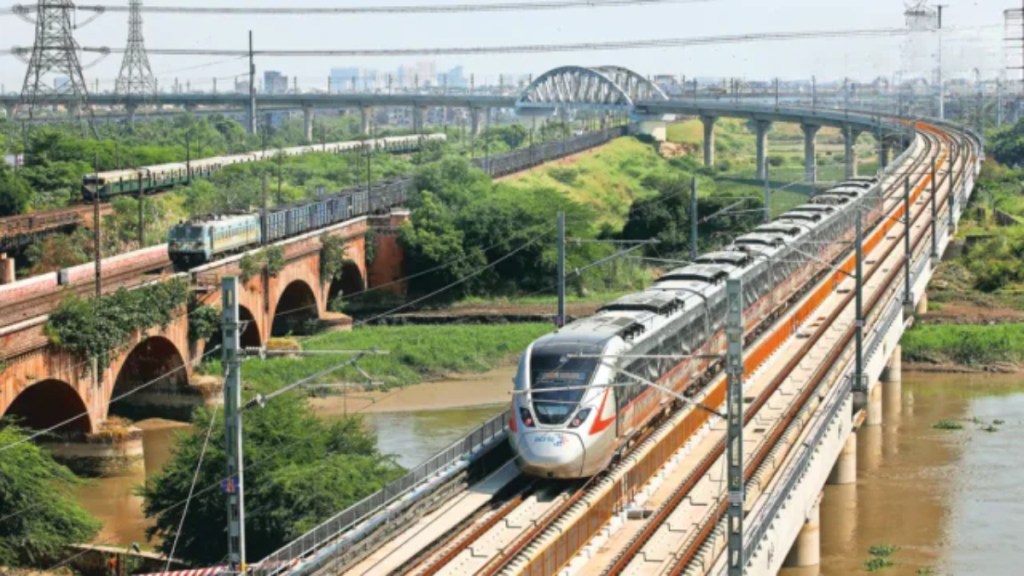National Capital Region Transport Corporation (NCRTC) officials have said that trial runs on the Delhi section of the Rapid Rail Transit System (RRTS) up to New Ashok Nagar station are set to commence by November.
With 900 solar panels installed on its roof, the Ashok Nagar station will be completely green and generate over 6.5 lakh units of electricity annually, The Indian Express reported. Besides this, it will also have a rainwater harvesting system comprising five pits, of which three have been completed. These pits will facilitate the absorption of rainwater collected from the station and viaduct into the ground, aiding in the replenishment of groundwater.
The officials stated that the construction of the viaduct, tunnels, track laying, overhead electricity, and signaling work on the section have been completed. The remaining work is progressing rapidly to connect the Delhi section of the RRTS with the operational section at Sahibabad, they added.
Sahibabad to Meerut South section
As of now Delhi-Ghaziabad-Meerut corridor’s Sahibabad to Meerut South section has been inaugurated and open for public. Construction is ongoing on the remaining section up to Sahibabad, which includes the three Delhi RRTS stations: Anand Vihar, New Ashok Nagar, and Sarai Kale Khan.
“The NCRTC is working towards achieving the highest IGBC certification rating for New Ashok Nagar station,” the Corporation said.
Officials announced that the NCRTC has implemented a solar policy to boost the use of renewable energy by generating over 11 MW of solar power throughout the corridor. As part of this initiative, solar panels are being installed at RRTS stations, depots, and other facilities. This effort is projected to cut CO2 emissions by 11,500 tonnes each year.
Solar plants have been installed at the Sahibabad, Guldhar, Duhai, and Duhai Depot stations along the operational section of the RRTS corridor, as well as at the Ghaziabad and Muradnagar receiving substations and the RRTS depot. Officials reported that these stations currently generate over 3 MW of electricity collectively. All these stations are carbon-negative, producing more electricity than they consume.
Additionally, the NCRTC plans to install over 900 rainwater harvesting pits along the corridor, with more than 80% of these already completed.
Once operational, the New Ashok Nagar RRTS station will connect to the existing New Ashok Nagar Metro station, enhancing connectivity for passengers.

